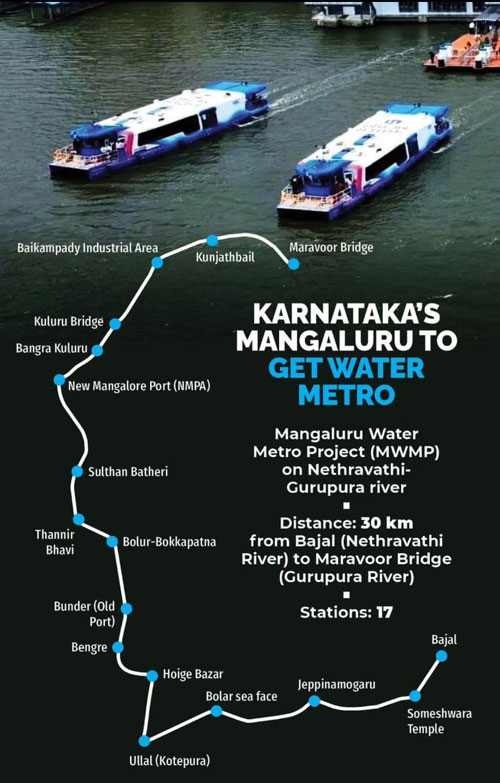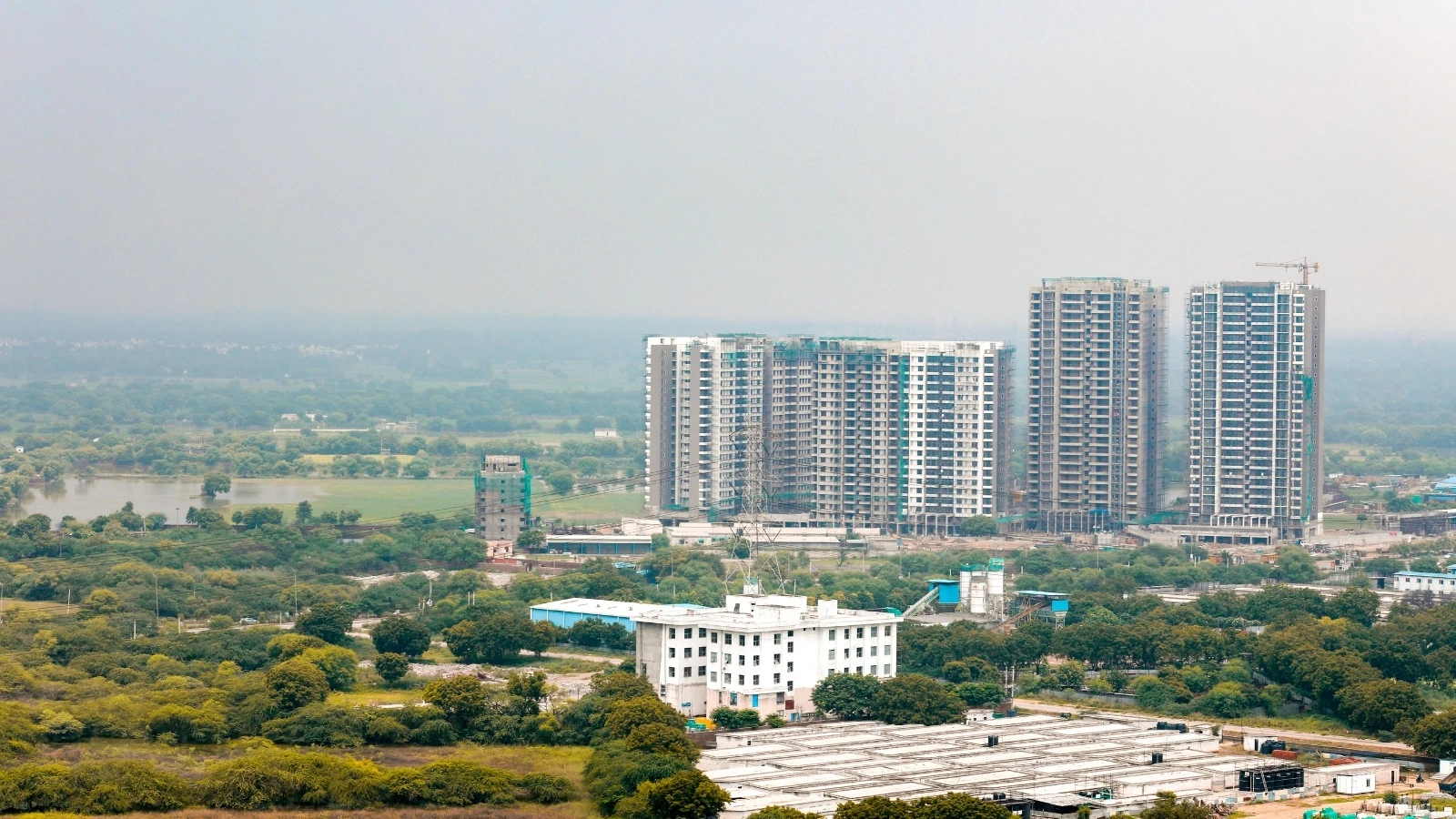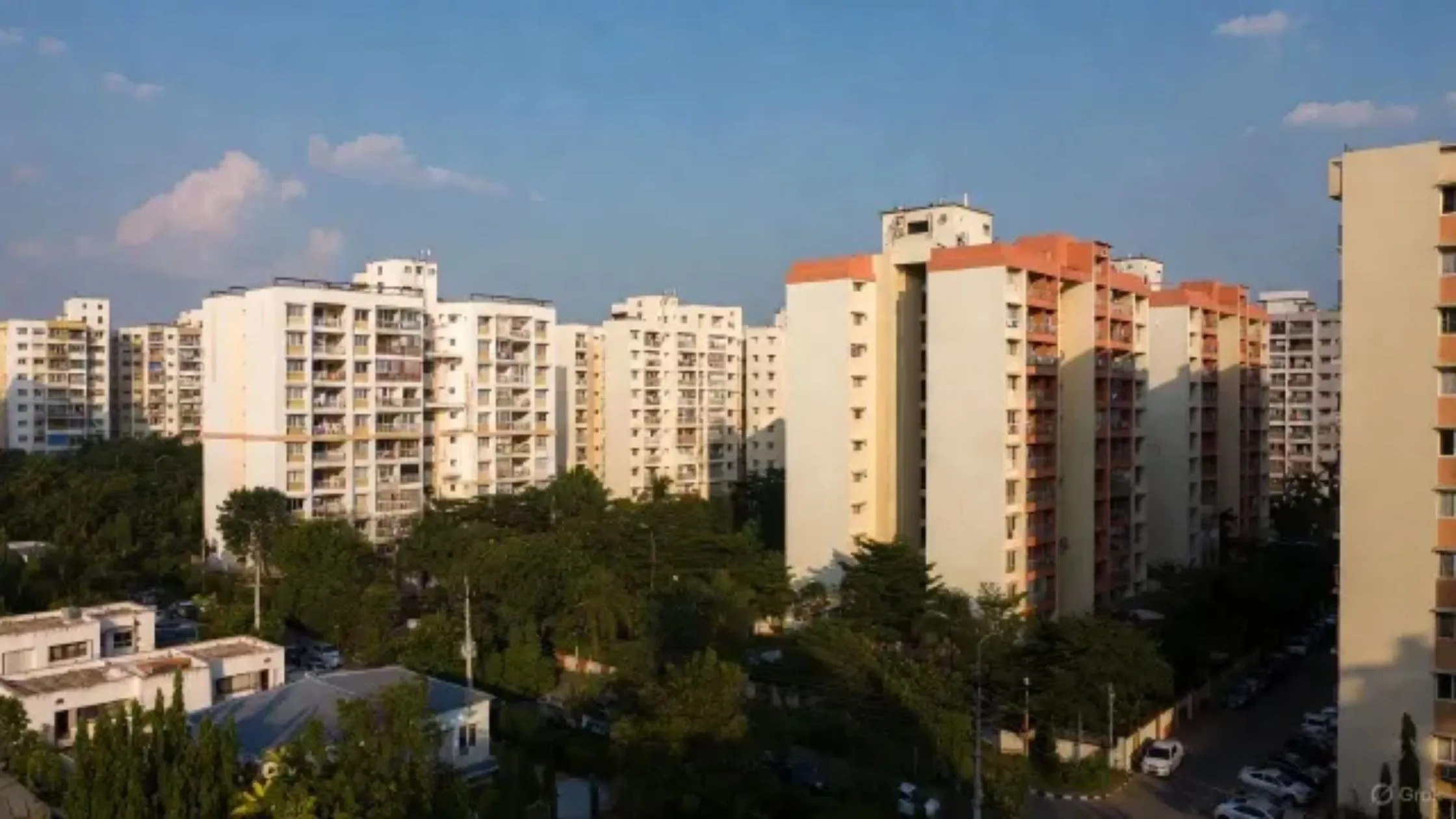Table of Content
The transportation landscape in Karnataka is set for a major transformation with two groundbreaking initiatives: the Mangalore Water Metro and the Karnataka Water Metro Project. These projects aim to revolutionize urban mobility by offering eco-friendly, efficient, and cost-effective transit solutions that will reduce traffic congestion, stimulate economic growth, and promote sustainable urban development. With clear timelines in place, these projects are expected to be rolled out in phases over the next few years.
Project Overview
Mangalore is preparing to launch the Mangalore Water Metro, a pioneering public transit system that will operate along the Nethravathi (NW-74) and Gurupura (NW-43) rivers. Spearheaded by the Karnataka Maritime Board (KMB), the project is designed to ease travel, reduce road congestion, and provide a budget-friendly commuting alternative. Following the success of the Kochi Water Metro, the Mangalore Water Metro is poised to become India’s second-largest water transport system. Phase I of the project is scheduled for completion by March 2026, laying the foundation for further expansion under the Karnataka Water Metro Project.
The project covers a 30-kilometre stretch featuring 17 state-of-the-art metro stations. This corridor is strategically planned to connect key urban and suburban areas, providing enhanced connectivity and boosting economic activity.
Also Read: Karnataka to Establish World-Class Film City in Mysuru: What You Need to Know
.jpg)
Route and Connectivity
The Mangalore Water Metro Project is planned along a 30-kilometre stretch connecting Bajal on the Nethravathi River to Maravoor Bridge on the Gurupura River. This corridor will feature 17 state-of-the-art metro stations that promise to connect key urban and suburban areas, ensuring seamless access to essential services and commercial hubs.
Below is a table detailing the route points along the Mangalore Water Metro:
|
Station/Route Point |
Description |
|
Bajal (Starting Point) |
Entry point on the Nethravathi River |
|
Someshwara Temple |
Major cultural landmark |
|
Jeppinamogaru |
Key residential and commercial zone |
|
Bolar Sea Face |
Scenic coastal area |
|
Ullal (Kotepura) |
Suburban connectivity hub |
|
Hoige Bazaar |
Busy local market area |
|
Bengre |
Industrial and residential mix |
|
Old Port (Bunder) |
Historical port area |
|
Bolur-Bokkapatna |
Strategic location for connectivity |
|
Thannir Bhavi |
Residential area with emerging development |
|
Sulthan Bathery |
Important transit and cultural site |
|
New Mangalore Port (NMPA) |
Major commercial port |
|
Bangra Kuluru |
Key locality near industrial zones |
|
Kuluru Bridge |
Critical link for local transportation |
|
Baikampady Industrial Area |
Industrial hub with growth potential |
|
Kunjathbail |
Developing residential and commercial area |
|
Maravoor Bridge (End Point) |
Exit point on the Gurupura River |
This detailed route ensures that the Mangalore Water Metro not only serves as a commuter transit solution but also enhances regional connectivity by linking key cultural, commercial, and residential areas.
Project Phases and Timeline
The development of the Mangalore Water Metro is structured into multiple phases to ensure systematic progress:
- Phase I (2024-2026):
The initial phase will focus on establishing the basic infrastructure along the primary 30-kilometre route from Bajal on the Nethravathi River to Maravoor Bridge on the Gurupura River. This phase includes the construction of 17 metro stations, installation of smart ticketing systems, and deployment of advanced electric and diesel catamaran boats. The target is to launch Phase I by March 2026. - Phase II (2026-2028):
Following the initial launch, Phase II will extend connectivity by adding new routes and enhancing terminal facilities. This phase will focus on integrating the water metro system with other modes of transportation, ensuring a seamless transit experience and fostering a comprehensive network that spans beyond the initial corridor.
Also Read: Karnataka Government’s Plan to Bring 1.35 Crore Properties Into the Tax Net

Key Features and Benefits
1. Eco-Friendly Transport System
A standout feature of the Mangalore Water Metro and the broader Karnataka Water Metro Project is their commitment to sustainability. Utilizing electric and hybrid catamaran boats, these projects aim to significantly reduce carbon emissions compared to traditional road transport. This eco-friendly approach is designed to lower operational costs and minimize environmental impact, aligning with the state’s green initiatives.
2. State-of-the-Art Infrastructure
Modern technology is integral to these projects. The planned 17 metro stations along the Mangalore Water Metro route will offer amenities such as smart ticketing, real-time tracking, and enhanced safety measures, including CCTV surveillance and GPS monitoring. This advanced infrastructure ensures a comfortable and efficient commute for passengers while setting new benchmarks in water-based public transportation.
3. Enhanced Economic Opportunities
The development of these water metro systems is expected to create significant economic benefits. Improved connectivity will attract both domestic and international investments, boost local businesses, and drive up property values in the surrounding areas. Additionally, integrating the Karnataka Water Metro Project with existing urban infrastructure will open new revenue streams, such as cargo transport through Roll-on/Roll-off (Ro-Ro) services, further stimulating regional economic growth.
4. Reduced Road Congestion
By offering an alternative mode of transportation, these projects will help decongest heavily trafficked urban roads and highways. This reduction in vehicular traffic is critical for improving air quality and easing pressure on existing infrastructure, thereby enhancing the overall quality of life for residents.
5. Future Expansion and Integration
The Mangalore Water Metro is designed with scalability in mind. Detailed feasibility studies, including cost-benefit analysis and demand forecasting, are underway to ensure long-term sustainability. Future expansion plans include extending connectivity to additional urban and suburban areas, integrating seamlessly with existing transit networks, and potentially incorporating additional services such as cargo transport.
Challenges and Considerations
While the prospects are promising, several challenges remain:
- Funding and Cost Management:
The ambitious scope of these projects demands robust funding models. Effective cost management through public-private partnerships and innovative financing strategies will be critical to keeping the projects on track. - Regulatory and Environmental Compliance:
Adhering to stringent regulatory guidelines and environmental norms is essential. Comprehensive environmental studies—including LIDAR mapping and bathymetric surveys—will help mitigate any adverse impacts on local ecosystems. - Infrastructure Integration:
Ensuring smooth integration with existing roads, rail networks, and airports is crucial. The success of both the Mangalore Water Metro and the broader Karnataka Water Metro Project depends on seamless connectivity across all transportation modes.
Conclusion
The launch of the Mangalore Water Metro and the broader Karnataka Water Metro Project represents a transformative leap in sustainable urban mobility for Karnataka. With Phase I set for completion by March 2026 and further expansions planned through 2028, these initiatives are poised to significantly reduce traffic congestion, drive economic growth, and enhance regional connectivity.
For residents, investors, and policymakers alike, these projects herald a new era of eco-friendly, efficient, and innovative public transportation. As these projects evolve, they will not only redefine urban transit but also create substantial economic opportunities and improve the quality of urban life across Karnataka.
Also Read: E-Khata:Transforming Property Management for Homebuyers in Karnataka





_1765522271.webp)

Ans 1. The Mangalore Water Metro is a pioneering public transit system operating along the Nethravathi and Gurupura rivers in Mangalore, designed to reduce traffic and offer eco-friendly connectivity.
Ans 2. Phase I, covering a 30-km route with 17 metro stations, is targeted for launch by March 2026, setting the stage for future expansions under the Karnataka Water Metro Project.
Ans 3. It employs electric and hybrid catamaran boats, incorporates smart ticketing systems, and emphasizes sustainable construction practices, reducing carbon emissions and enhancing energy efficiency.
Ans 4. The project will connect key urban and suburban areas along a 30-km stretch, from Bajal on the Nethravathi River to Maravoor Bridge on the Gurupura River, boosting local connectivity.
Ans 5. Improved connectivity from the water metro projects is expected to increase property values, stimulate new development opportunities, and attract both domestic and international investments in the region.
Ans 6. Phase II, scheduled for 2026-2028, will extend connectivity with new routes and terminal enhancements, integrating with other transit modes to build a comprehensive urban mobility network.